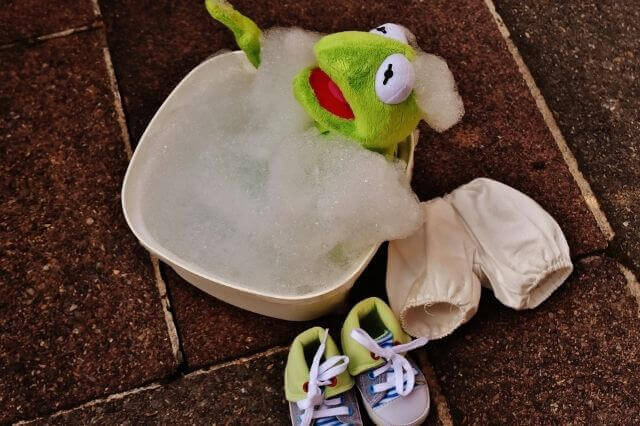Sometimes, keeping your baby safe means doing more than just washing their hands and keeping the house clean. Kids can pick up germs from all over the place.
One place that is often overlooked is where they play. That is why it is imperative that parents know how to clean toys for infants.
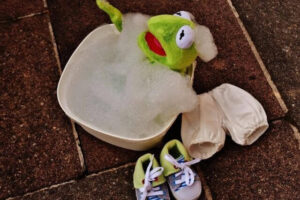
Toys sometimes have germs, mold, and bacteria that can make your infant sick. After all, babies do not have a lot of control over what they put in their mouths.
Also, shared toys can spread germs like colds and even the COVID 19 Corona Virus.
But do not fret! Here are some tips on how to clean toys for babies to keep them happy, healthy, and safe.
Also Learn More: Best Toys for Nine Month Olds
See Also: Best Bouncy Castle For 7 Year Old
Table of Contents
1. How to disinfect toys with bleach
When finding out how to sanitize toys with bleach, the first and most important question to ask yourself is, what kind of toys are recommended to clean with bleach?
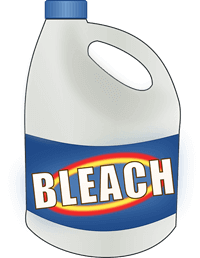
The National Pesticide Information Center recommends using bleach only on hard, non-porous toys, such as plastic. Hence, do not use it on soft, absorbent toys, such as stuffed animals. It can weaken the fibers, cause extensive color removal, or eat holes in the fabric.
A water/bleach solution is the best sanitizing agent for disinfecting toys.
However, you need to know the proper ratio of water to bleach before learning how to disinfect baby toys with bleach.
In this case, we recommend 1.5 teaspoons of bleach to a gallon of water.
Here are the steps on how to sanitize baby toys with bleach:
Step 1: Scrub, rinse, and dry the toys
Step 2: Disinfect the toys by submerging them in the sanitizing agent
Step 3: Let them soak for 5 minutes
Step 4: Rinse again thoroughly in clean water to remove any disinfectant solution.
Step 5: Lay out the toys to air dry.
Pros
The key advantage of learning how to clean toys with bleach and water is that bleach kills both bacteria and viruses. Also, it kills and removes mold from toys.
Cons
One drawback of using bleach as a disinfectant for toys is that it tends to be harsh on plush toys. In addition, if you do not get the mixture right, bleach can be corrosive or even cause respiratory distress.
2. How to clean toys with vinegar
 Can you use vinegar to clean baby toys? This is one question we get asked quite often.
Can you use vinegar to clean baby toys? This is one question we get asked quite often.
Well, vinegar is often used in household cleaning because it has such great versatility. It will break down dirt and grime on toys. Also, it is safe for use on all toys without the worry of harsh chemical cleaners.
In order to keep your kids healthy, we recommend giving their toys a good scrubbing every week or two with some vinegar.
Here are the steps on how to clean toys with vinegar:
Step 1: Mix 1 cup of vinegar with 1 cup of distilled water
Step 2: Put the mixture in a spray bottle and spray onto the toys
Step 3: Let the toys sit for 1-2 minutes
Step 4: Wipe them clean with a damp cloth
Pros
Vinegar is a great grease cutter that cleans deep down into the crevices where you cannot reach. Plus, vinegar has a fresh scent, and it is not bad for the environment!
Cons
Though vinegar can kill some germ strains, it is not a powerful enough clean for sanitizing and disinfecting toys.
3. How to clean teething toys
3.1 How to clean baby teething toys
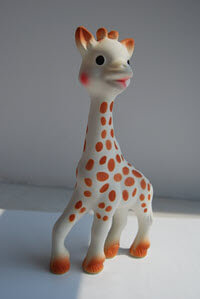 It is critical for guardians to learn how to clean teether toys because they harbor bacteria that can lead to food poisoning.
It is critical for guardians to learn how to clean teether toys because they harbor bacteria that can lead to food poisoning.
Also, when you learn how to clean baby teethers, your child is safe because it eliminates the risk of infection or illness. Not only that, but it also keeps your baby’s toy smelling fresh.
These are the steps to follow on how to clean and sterilize baby teethers:
Step 1: Wash thoroughly with soap and water
Step 2: Put the teether in a strainer and place it on the sink
Step 3: Pour boiled water over the teether. Alternatively, you can steam it for 3-5 minutes or put it in the microwave
Step 4: Let it cool before giving it to the baby
3.2 How to sterilize silicone teether
While it is safe to sterilize silicone in the dishwasher, ensure not to put it at the bottom of the machine. Instead, it is a top rack only, meaning it is only safe when washed on the top rack of the dishwasher.
3.3 How to clean Sophie the Giraffe teething ring
Sophie the Giraffe comes in 100% natural rubber, hence requiring extra care. Do not put it in a steam sterilizer, boiling water, microwave, or dishwasher. Instead, wipe it clean using dish soap or a capsule of bleach.
Also Learn More: Best Jumping Toys for Babies
4. How to disinfect baby toys naturally
Learning how to sanitize baby toys naturally can be considered to be the same as how to clean baby toys without chemicals or even how to disinfect baby toys without bleach.
The common key advantage of learning how to clean baby toys naturally is that it keeps your baby safe while also saving you money. In fact, most will not cost you a penny despite being so effective.
These methods comprise the best way to clean baby toys naturally:
4.1 How to wash baby toys in the washing machine?
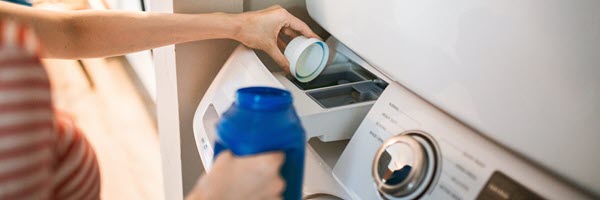
Can you wash baby toys in the washing machine?
Yeah, definitely.
If your baby has a lot of toys, it can be difficult to keep up with washing them. Plus, it is hard to get every part of the toy clean.
But there are some things that you can do to make your life a bit easier. One of those is washing baby toys in the washing machine.
The washing machine is not only ideal for plush, stuffed toys but also for hard plastic toys.
Though effective, you should never put plastic toys that have batteries in the washing machine as it will do more damage than good.
Hence, any plastic toy that moves, talks, or plays music is not ideal for the washing machine.
Here are the steps to follow on how to wash toys in the washing machine, so they stay clean and free from germs over time.
Step 1: Check the label for any care instructions
Step 2: Put the toy in a mesh laundry bag to protect against wear, tear, or rattling noise. Also, you can use a zippered pillowcase or one with tied ends.
Step 3: Choose Delicate, Gentle, or Hand Wash cycle. Also, ensure you use cold water to keep the colors from fading or pad the drum with towels for extra safety.
Step 4: Add a bit of natural laundry detergent. It can be a mild detergent or regular detergent in the case of stuffed animals.
Step 5: Take the toys out of the mesh bag and hang or lay them flat to air dry.
Pros
Washing your baby’s toys in a washing machine is one of the safest ways to ensure they are free from germs.
The sanitize cycle, in particular, will eliminate bacteria as well as the chemicals that could be harmful to your baby’s health.
In addition, washing them in a washing machine is much less wasteful than boiling them- you are not creating any extra garbage! And best of all, it is so easy!
Cons
Cleaning baby toys in the washing machine may seem like a convenient way to get them squeaky clean. The truth, however, is that not all toys are meant for the washing machine.
For instance, if you have toys that have batteries in them, steer clear of the washing machine.
4.2 How to disinfect baby toys by boiling
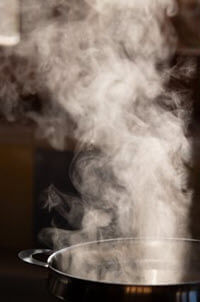 Boiling is one of the simplest ways to sanitize baby toys. All you need is water, a stove, and a pot.
Boiling is one of the simplest ways to sanitize baby toys. All you need is water, a stove, and a pot.
Steps to follow on how to disinfect toys by boiling
Step 1: Get a pot of water and bring it to a boil
Step 2: Remove the pot of water from the heat source and submerge the toys
Step 3: Let the toys soak for 5-10 minutes, then remove them
Step 4: Let the toys cool and air dry before use
Pros
The key advantage of disinfecting toys by boiling is that it is simple and straightforward. Not only is it a DIY-friendly method, but it also boils away any germs or bacteria.
Cons
One drawback of boiling is that it is not ideal for soft plastic toys. Instead, it is only ideal for cleaning and sanitizing hard plastic toys.
4.3 How to clean toys in the dishwasher
The dishwasher can be a great way to deep-clean toys that are safe for the high-temperature, high-pressure wash. Also, for those with small children, it can also be a quick and efficient way of cleaning up after them!
But this method does not work well for all toys. For example, you should never put plush toys and other stuffed animals in the dishwasher because they will shrink.
Also, electronic toys such as plastic keyboards cannot withstand the harsh conditions of the dishwasher either.
Steps on how to clean toys in the dishwasher
Step 1: Check the label for specific care instructions. Only consider toys that are labeled as dishwasher safe.
Step 2: Fill your dishwasher with soap and water, and do not use more detergent than you need.
Step 3: Put your toys in a sealable, airtight bag that cannot break apart when washing.
Step 4: Place the toy on the top rack and set your dishwasher on the normal cycle.
Step 5: Air-dry the toys to prevent mold and bacteria and remove them when clean.
Pros
The key advantage of a dishwasher is that it provides deep cleaning. It not only cleans toys but also prevents mold and bacteria.
Cons
Well, dishwashing is not safe for all toys. For example, if you have electronic toys or stuffed toys, this method is not for you.
4.4 How to disinfect baby toys by freezing
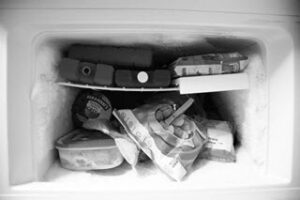 It seems like a simple idea, but many parents do not know that you can disinfect toys by freezing them.
It seems like a simple idea, but many parents do not know that you can disinfect toys by freezing them.
This way, you do not have to worry about all of the germs that your kids pick up on their toys.
Here is how to do it!
Step 1: Spot clean the toy and allow it to dry
Step 2: Place the toy in a plastic bag.
Step 3: Seal the bag tightly with an elastic band or string.
Step 4: Freeze it for about 4 hours (or until frozen).
Step 5: Remove from the freezer and let thaw naturally at room temperature before removing from the bag.
It is as easy as that!
Pros
The key benefit of freezing toys is that it kills about 90% of germs, bacteria, and viruses.
Cons
Disinfecting toys by freezing is a time-consuming process. So, unless you have a backup toy, your kid will get bored. Also, freezing is not safe for electronic toys as it can cause permanent damage.
4.5 Disinfecting baby toys by steaming
You may be wondering how you can clean your child’s toys without them being damaged by water.
While boiling water will kill most bacteria, it can also damage many soft and hard plastic toys.
Instead, try using a steam cleaner to disinfect your child’s toys. All you need is a few minutes, water, and a hand-held steamer.
Here is a step-by-step guide:
Step 1: Spot clean the toy
Step 2: Check care labels for advice before steaming
Step 3: Prepare the steamer for use by pouring cold water into the tank
Step 4: Hang the toy you wish to steam and run the steamer over it
Step 5: Let the toy sit for 5-10 minutes before giving it to your baby
Pros
Steaming not only gets rid of dirt and bacteria. It also removes any residual chemicals that might be left on your toys from the manufacturing process.
Also, steaming can eliminate 99% of bacteria and viruses on surfaces with just one hour of cleaning.
It does not matter if the toys are made out of plastic or cloth; a steam cleaner will be able to wash away dirt, germs, grime, and more. In addition to sanitizing your toys, a steamer will also help to deodorize them.
That is not all. A Steamer will also help you to safely deep-clean toys with batteries.
Cons
You may have to clean more often. However, the time between cleanings depends on the power of your steam cleaner.
4.6 How to disinfect toys naturally in the microwave
Using a microwave is another easy way to disinfect stuffed animals without using chemicals! All you need is a wrapper and microwave. Unlike baking, you do not have to wait for long – this solution will take just 5-10 minutes.
Here is a quick guideline
Step 1: Spot clean the toy and let it dry
Step 2: Wrap the toy in a foil and put it in the microwave
Step 3: Set the temperature to at least 165 degrees Fahrenheit
Step 4: Heat the toy for 5-10 minutes and remove it from the microwave
Pros
Microwave kills germs, bacteria, and viruses on contact. Also, it helps get rid of any lingering smells left behind from cleaning.
Cons
Disinfecting toys in the microwave is not ideal for plastic toys as it can cause them to melt. Also, it is only good for stuffed animals as long as they do not have any metal parts.
4.7 How to clean toys naturally by vacuuming
Toys are notorious for being dust collectors, especially in the crevices and cracks where it is hard to get your hands or some other cleaning utensil in there to scrub.
Your best bet is to vacuum them up! Yep, that is right! Just put your toys in a bag and vacuum them up. It is an excellent method, especially for stuffed animals that tend to collect more dust.
To remove dust, mites, dirt, and allergen from stuffed animals, follow these steps:
Step 1: Put your stuffed animals in a garbage bag and insert the nozzle of the vacuum into the bag.
Step 2: Seal the bag, ensuring it is airtight around the nozzle.
Step 3: Turn on the vacuum cleaner and give it time to suck out all the dust, air, and dirt.
For smaller toys, however, there is no need to put them in a garbage bag. You can hold it in your hand and use the nozzle attachment to suck up dust and air.
Pros
Vacuuming stuffed animals not only keeps them clean but also appeals to babies who have allergies.
Cons
During vacuuming, stuffed animals tend to lose shape. Hence, you might need to re-fluff them.
5. How to clean baby toys that cannot be washed
Some toys cannot stand up to washing.
Some plush toys, for instance, tend to color bleed. Electronic toys, on the other hand, are not safe to submerge in water.
So, how do you clean them?
5.1 How to clean plush toys that cannot be washed
For plush toys that bleed, follow these steps:
Step 1: Dip a cloth in a warm soapy solution and work it over the entire toy.
Step 2: Rinse the plush toy with a cloth dipped in clean water and wrung out well.
Step 3: Allow the toy to dry. In this case, you can let it air dry or speed up the process using a hairdryer.
Alternatively, you can run a garment steamer over your plush toy and vacuum it thoroughly to eliminate dust mites, bacteria, and allergens.
5.2 How to clean electronic toys
To clean electronic toys:
Step 1: Disconnect the toy or remove the batteries. However, remember to put back the battery cover.
Step 2: Dip a clean cloth in soapy water, wrung out, and wipe the toy to remove visible dirt and grime. Make extra passes on stubborn stains or in crevices.
Step 3: Rinse it well with a clean, well-wrung cloth and let the toy air dry.
However, for sanitization purposes, use disinfecting antimicrobial wipes.
Frequently Asked Questions
Can I use antibacterial wipes on baby toys? Are antibacterial wipes safe for baby toys?
Yes, you can use antibacterial wipes for baby toys because they are specifically for killing bacteria, which will help keep your child healthy and safe. Also, they use a mild formula that is non-toxic and gentle on your baby’s skin.
Another good thing about antibacterial wipes is that you can use them to clean and disinfect household surfaces, including the floor.
Therefore, it is safe to use disinfectant wipes on baby toys. However, you have to select the best sanitizing wipes for baby toys to achieve maximum protection.
In this case, we recommend Lysol Disinfecting Wipes. It not only kills 99.9% of viruses and bacteria but it is also tested and proven to kill COVID 19 Corona Virus.
Steps to follow when using sanitizing wipes for baby toys:
Step 1: Use a fresh wipe t thoroughly wet the surface of the toy
Step 2: Let it remain wet for 5 minutes or as indicated on the wipe’s label
Step 3: Dry it with a clean paper towel, and you are good to go.
Pros
Antibacterial wipes disinfect surfaces and make them cleaner than ever before. Studies show that using these wipes on baby toys can reduce the prevalence of bacteria by up to 99%.
Plus, it disinfects surfaces quickly without much effort. And the best part is it is safe for all toys, even battery-operated toys that cannot be washed.
Still, there is one more benefit. Unlike other cleaning methods, antibacterial wipes are travel-friendly. Hence, you can use them to clean and disinfect your baby’s toys on the go.
Cons
Well, antibacterial wet wipes are not completely biodegradable. Though not by much, they can have a negative impact on the environment.
Conclusion
I hope this article has helped you know a thing or two on how to clean toys for babies. These are tested and proven DIY tips that will help keep your baby’s toy free of visible dirt, germs, and bacterial.
Not only that, but our tips on how to clean toys for infants will also help curb the spread of the COVID 19 Corona Virus.
And as you might have realized, most of our tips will not cost you a penny. So, why wait until it is too late?
Put these toy cleaning tips into practice to keep your baby healthy and also have peace of mind knowing they are safe.
All the best cleaning baby toys at home!

